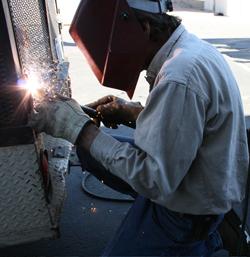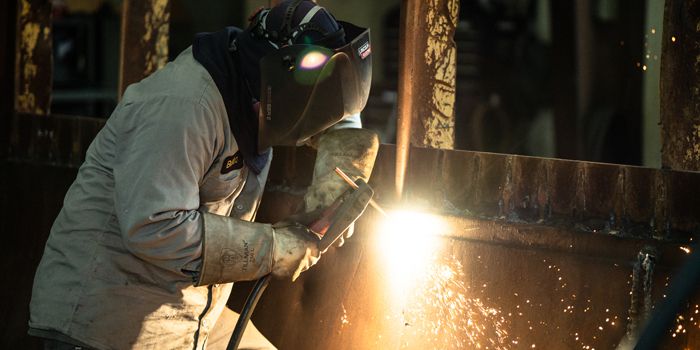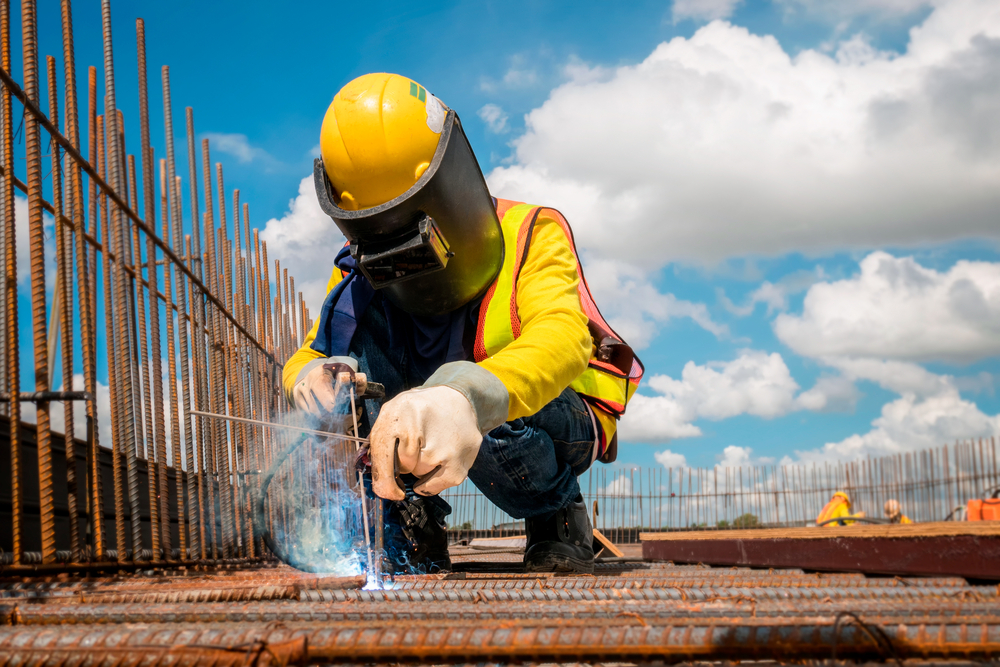Usual Welding Repair Issues and Just How to Address Them Properly
Welding repairs often come across a variety of problems that can jeopardize the integrity of the final product. Typical problems include inadequate infiltration, porosity, and imbalance, to name a few. Each defect provides special obstacles that call for particular techniques for resolution. Understanding these issues is vital for welders aiming to enhance their skills and outcomes. This conversation will certainly discover these common welding repair concerns and efficient techniques to address them.
Inadequate Penetration
Insufficient penetration takes place when the weld metal fails to completely fuse with the base material, leading to weak joints and prospective architectural failings. This concern usually comes from insufficient warmth input, wrong electrode angle, or incorrect welding speed. Welders might come across insufficient penetration as a result of a miscalculation of the required parameters for a particular product density or kind. In addition, contamination on the base material's surface can prevent reliable bonding, worsening the trouble. To resolve poor infiltration, welders ought to ensure appropriate settings on their tools and preserve a tidy job surface area. Regular examination of welds is suggested to identify any kind of deficiencies early, allowing for timely adjustments and the avoidance of compromised structural integrity in welded assemblies.
Porosity
Porosity is a typical flaw in bonded joints that shows up as tiny gas bubbles trapped within the weld metal. This flaw can jeopardize the honesty of the weld, bring about reduced stamina and prospective failing under anxiety. Montana Mobile Welding and Repair Fabrication. Porosity normally arises from contamination, moisture, or improper welding strategies, which permit gases to get away into the molten weld swimming pool. To deal with porosity, welders must ensure correct surface preparation, preserve a clean functioning atmosphere, and make use of ideal welding specifications. In addition, picking the best filler product and securing gas can alleviate gas entrapment. Regular assessment and testing of welds can aid determine porosity early, guaranteeing prompt rehabilitative actions are taken, therefore protecting the top quality and integrity of the welded structure
Imbalance
Imbalance in welding can develop from numerous aspects, consisting of inappropriate setup and thermal development. Recognizing the origin is important for efficient resolution. A number of modification strategies are available to realign elements and guarantee structural honesty.
Root causes of Misalignment
Welding imbalance typically stems from a selection of underlying concerns that can endanger architectural stability. One main reason is inappropriate fit-up of components before welding, which can result in voids and unequal surface areas. Variations in thermal expansion throughout the welding procedure can likewise result in distortion, especially if the products being joined have different coefficients of development. In addition, poor fixturing and clamping may stop working to hold components securely in position, causing movement during welding. Inadequately maintained equipment, consisting of welding devices and devices, may present disparities in the weld grain, more adding to misalignment. Operator error, stemming from insufficient training or experience, can additionally play a substantial function in creating misaligned welds.

Correction Strategies Readily Available
Dealing with misalignment effectively needs a combination of restorative methods customized to the certain problems available. One typical technique is the use of jigs or components to hold elements in the correct position throughout welding, ensuring consistent positioning. Furthermore, pre-heating the materials can help in reducing distortion and boost fit-up. For substantial imbalance, mechanical adjustment techniques, such as making use of hydraulic jacks or clamps, can be utilized to correct the placement before welding. Post-weld heat treatment might additionally be essential to soothe anxieties brought on by imbalance. Finally, mindful assessment and modification throughout the configuration stage can prevent misalignment issues from becoming considerable issues, promoting a smoother welding process and enhancing general structural integrity.
Distortion
Distortion is a common challenge in welding that can occur from various factors, including uneven cooling and heating. Understanding the root causes of distortion is crucial for executing reliable avoidance methods. Addressing this problem not only enhances structural honesty yet likewise improves the total quality of the weld.
Root causes of Distortion
When based on the extreme warm of welding, products typically go through changes that can lead to distortion. This sensation largely develops from thermal development and contraction throughout the welding process. As the weld location heats up, the product broadens; upon cooling, it contracts, which can produce inner stress and anxieties. On top of that, unequal heating throughout a work surface can aggravate these stress and anxieties, causing warping or bending. The kind of product likewise plays a considerable function; metals with differing thermal conductivity and coefficients of expansion might react in a different way, bring about Find Out More uncertain distortions. Inadequate joint layout and poor fixturing can contribute to imbalance during welding, boosting the chance of distortion. Understanding these causes is vital for efficient welding repair work and prevention approaches.
Prevention Techniques
Effective avoidance methods for distortion throughout welding emphasis on managing warmth input and making certain appropriate joint layout. Keeping a constant warm input aids to lessen thermal growth and contraction, which can bring about distortion. Using methods such as pre-heating the workpiece can likewise minimize the temperature level gradient, promoting uniform home heating. In addition, picking ideal joint styles, such as T-joints or lap joints, can improve security and reduce stress and anxiety focus. Applying proper fixturing to protect the work surfaces in place better help in keeping positioning during the welding process. Lastly, staggered welding sequences can distribute warmth more equally, avoiding local distortion. By applying these strategies, welders can substantially lower the possibility of distortion and improve the overall quality of their welds.
Fracturing
Splitting is a common issue encountered in welding repairs, frequently arising from different variables such as inappropriate air conditioning prices, material option, or inadequate joint prep work. The event of cracks can significantly compromise the honesty of the weld, resulting in potential failures during operation. To resolve this issue, welders should initially evaluate the root creates, making certain that products are suitable and properly selected for the specific application. Furthermore, regulating the cooling price during the welding process is vital; quick cooling can generate stress and anxiety and result in fracturing. Appropriate joint style and prep work additionally contribute to minimizing the threat. Executing these approaches can enhance weld high quality and toughness, ultimately lowering the probability of breaking in finished weldments.

Incomplete Blend
A substantial concern in welding repair work is insufficient combination, which occurs when the weld metal does not properly bond with the base material or previous weld passes - Montana Mobile Welding metal arc welding and Repair Belgrade Fabrication. This problem can bring about weaknesses in the joint, potentially compromising the stability of the welded structure. Aspects adding to insufficient combination include insufficient warmth input, improper welding technique, and contamination of the surface areas being signed up with. To resolve this problem properly, welders should ensure proper pre-weld cleaning and surface area preparation, as well as readjust their welding criteria to attain sufficient penetration and fusion. Regular assessment during the welding process can likewise aid recognize insufficient blend early, enabling timely corrective procedures to enhance the general high quality of the weld
Overheating
While welding repair work can boost structural stability, overheating offers a considerable difficulty that can lead to material deterioration. Excessive heat during welding can modify the mechanical properties of metals, leading to reduced stamina, boosted brittleness, and bending. This sensation is particularly important in high-stress applications where architectural integrity is vital. Identifying overheating can entail visual evaluations for staining or distortion, in addition to checking temperature level during the welding procedure. To mitigate the threats connected with overheating, welders must use ideal methods, such as managing warm input, readjusting traveling speed, welding backpack and utilizing ideal filler products. Additionally, applying pre- and post-weld warm therapies can help bring back material residential or commercial properties and improve the total quality of the fixing, making certain lasting efficiency and safety and security.
Frequently Asked Inquiries
What Are the Usual Indicators of a Welding Issue?

Exactly How Can I Evaluate My Welds for Top quality?
To check welds for high quality, one can use aesthetic assessments, ultrasonic testing, and radiographic approaches. Each technique ensures architectural honesty, determines flaws, and confirms adherence to specified requirements, eventually enhancing the integrity of the bonded joints.
What Safety Safety Measures Should I Take While Welding?
When welding, one need to prioritize safety by wearing suitable individual protective tools, making sure correct air flow, protecting combustible products away, preserving a clean work space, and understanding surroundings to avoid injuries and crashes.
Can I Repair a Weld Without Renovating the Entire Joint?
Repairing a weld without redesigning the entire joint is feasible, depending upon the damages (Montana Mobile Welding and Repair Belgrade Welding). Techniques such as grinding, adding filler material, or making use of a welding process can effectively deal with specific defects while maintaining the bordering structure
What Tools Are Necessary for Reliable Welding Services?
Crucial tools for reliable welding repairs include a welding machine, cord brush, mill, safety equipment, clamps, and filler materials. Each tool plays an essential role in making sure quality and safety throughout the repair work procedure. Porosity commonly occurs from contamination, dampness, or inappropriate welding techniques, which allow gases to get away into the molten weld swimming pool. Inadequately kept devices, consisting of welding equipments and tools, may present inconsistencies in the weld grain, additional contributing to imbalance. When subjected to the intense warmth of welding, products often go through changes that can lead to distortion. Cracking is a common concern run into in welding repair work, commonly resulting from various aspects such as incorrect cooling prices, material selection, or insufficient joint prep work. A considerable problem in welding repair work is insufficient combination, which occurs when the weld steel does not effectively bond with the base product or previous weld passes.